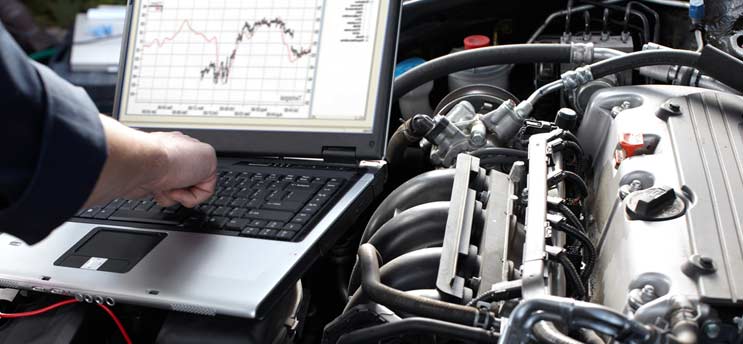Low-Noise Sensor with Enhanced Low-Field Sensitivity
For use in electronics, biomedical equipment, motor vehicles, and consumer goods

This novel magnetic sensor provides the high sensitivity of a Hall sensor at low fields as well as the high sensitivity of an EMR sensor at high fields, combining the strengths of both types of devices. It offers a simple, elegant design that enables mass fabrication and easy miniaturization, and it has low power requirements. Relying on a combination of the extraordinary magnetoresistance (EMR) and Hall effects, this new sensor has the potential to make an impact in many industries that require highly sensitive magnetic sensors across a wide range of magnetic fields. The EMR sensor’s application areas include automotive, biomedical, electronics, and consumer goods.
Technology Summary
Hall-effect sensors currently dominate the magnetic sensor market. EMR sensors are a promising new type of magnetic field sensor exhibiting high sensitivity at moderate to high magnetic fields. Our innovative Hall-enhanced EMR (HEMR) sensor takes advantage of both the EMR and Hall effects to achieve high sensitivity across a wide range of magnetic fields, offering important benefits to broad application areas. Its superior performance at moderate and high magnetic fields makes it a good candidate to replace Hall sensors in many applications. The tables provided in this document show how the HEMR sensor outperforms conventional technologies.
How It Works

Due to the geometrical nature of the EMR effect, lead placement has a significant impact on magnetic sensor efficienc. Current state-ofthe-art EMR sensors achieve enhanced performance by geometric optimization of the placement of voltage probes and current leads. However, this technology’s novel placement of the leads takes advantage of the Hall effect to further enhance the performance of the sensor, achieving high sensitivity across a broad range of magnetic fields and combining the advantages of both Hall effect and EMR sensors in one simple device.
Why It Is Better
This EMR-based technology is among the most sensitive magnetic field sensors currently available. The design can be easily miniaturized and manufactured on a large scale. EMR magnetic sensors are inherently low profile, providing significant placement advantages over traditional magnetic sensors. Conventional EMR sensors suffer from poor sensitivity at low magnetic fields.
This novel design solves this problem by using the Hall effect. As EMR sensors continue to gain market share, this technology can provide a versatile magnetic sensor with the advantages of both EMR and Hall effect sensors. This novel technology has the potential to make an impact in many industries that require highly sensitive, miniaturized magnetic sensors. For example, it can be used in the automotive industry to measure quantities like torque, rotation, speed, angle, or position in a vehicle.
Due to its extraordinary sensitivity, it also can be used in the electronic compass market. In addition, the technology can sense whether a product is open or closed, such as a washing machine lid; refrigerator door; or the folding display in a phone, laptop, or digital camera.
IP Protection
KAUST has several patents pending for this technology.
Invention Track Code
2010-028

Benefits
- Highly sensitive: This device provides high sensitivity at both low and high magnetic fields.
- Combined Hall & EMR effect: The same device can be used as a Hall or an EMR sensor.
- Simplified design: The elegant design reduces the required number of electrodes.
- Low power: This device consumes significantly less power vs. conventional magnetic sensors.
- Non-magnetic materials: This device results in no magnetic noise or hysteresis effects.
- Simple fabrication: The device uses the same standard fabrication process as Hall sensors.
- Robust device: It offers the same robust performance as Hall sensors.
- Proven technology: A prototype has been fabricated and tested in the lab.

Applications
- Biomedical
- Magnetic particle imaging
- Automotive
- Measuring vehicle torque, rotation, speed, angle, or position
- Electronics
- Cell phones
- Cameras
- Computers
- Consumer goods
- Washing machines, refrigerators, and other household appliances
